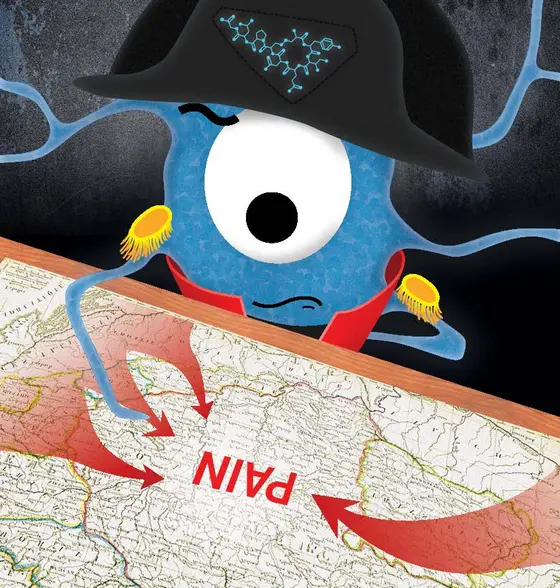Oxytocin is a peptide synthesized by the hypothalamus. As a hormone, its release into the blood controls several functions, the most widely known being the contraction of the uterus during birth and the release of maternal milk following birth. Its additional role as a neurotransmitter has been shown by several studies, highlighting oxytocin’s involvement in social communication, development of anxiety, stress response and, recently, pain.
The team of Drs. Valery Grinevich, Ron Stoop and Alexandre Charlet had identified a group of about thirty oxytocinergic neurons that act as taskmasters in order to coordinate the global analgesic effect of oxytocin. These neurons are solicited during episodes of acute pain or inflammatory sensitization. Under these conditions, they first activate a family of magnocellular neurons in the neighboring supraoptic nucleus, thus triggering the release of oxytocin into the bloodstream. This leads to a diffuse analgesic effect by reducing the sensory perception of peripheral neurons that relay nociceptive information. Via long-range axons, these neurons reach the deep layers of the spinal cord and secrete oxytocin precisely at the level where the intensity of the nociceptive message is encoded in the central nervous system. Thus, the release of oxytocin acts via a dual pathway: first, it reduces the perception of pain and second, it filters the nociceptive input into the central nervous system.
The results provide evidence for anatomical and functional heterogeneity within the central oxytocin system and offer a new direction for research of mechanisms of coordinated oxytocin regulation of autonomic functions and behavior. Furthermore, from now on, oxytocin can be seen not only as a potential drug for treatment of social deficits in patients with autisms or schizophrenia, but also as a promising therapeutic agent alleviating acute pain.
An illustration is available at: Neuron_cover.jpg
Illustration: Tatiana Glazowa, ©Valery Grinevich
Caption: A revolutionary finding for Oxytocin: Both peripheral and central pathways join in a strategic maneuver to conquer pain
Marina Eliava, Meggane Melchior, H. Sophie Knobloch-Bollmann, Jérôme Wahis, Miriam da Silva Gouveia, Yan Tang, Alexandru Cristian Ciobanu, Rodrigo Triana del Rio, Lena C. Roth, Ferdinand Althammer, Virginie Chavant, Yannick Goumon, Tim Gruber, Nathalie Petit-Demoulière, Marta Busnelli, Bice Chini, Linette L. Tan, Mariela Mitre, Robert C. Froemke, Moses V. Chao, Günter Giese, Rolf Sprengel, Rohini Kuner, Pierrick Poisbeau, Peter H. Seeburg, Ron Stoop, Alexandre Charlet, and Valery Grinevich: A new population of parvocellular oxytocin neurons controlling magnocellular neuron activity and inflammatory pain processing. NEURON 2016, DOI: 10.1016/j.neuron.2016.01.041



